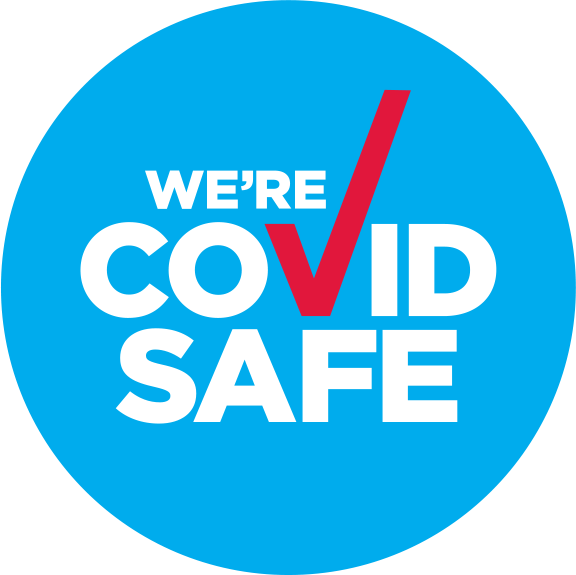
ABSTRACT
Traditional teaching focused on the face-to-face experience. Lecturers were given training on how to engage students in a face-to-face setting. But virtually all teaching during the COVID-19 pandemic was online, and much teaching in the higher education sector continues to be online. What about the nuances of online learning? This article explores the author’s personal experience in moving from wholly face-to-face to a purely online teaching environment.
INTRODUCTION
Prior to the pandemic, tertiary education in Australia was delivered mainly in face-to-face mode, with strict regulations around student-to-staff ratios and the number of students allowed in a building at any one time (Heimshelp, 2022).
Lecturers were often given training on how to engage with students in this environment. Such training included:
- Asking questions, particularly open-ended questions;
- Chunking lectures into 15-minute segments to better match the perceived attention span of students;
- Asking students to do small group-work activities and present the outcomes to the whole class (Miller, 2022);
- Using in-class quizzes, foreshadowed or pop (unscheduled or unannounced);
- Using props such as different coloured pens;
- Playing of music; and
- Walking around the classroom to ensure that students are not sleeping.
On a personal note, this lecturer sometimes used lollies as an inducement to students to engage in banter and discussion. This, of course, cannot be done in an online environment. When she was forced by the pandemic to switch suddenly from face-to-face teaching, she was therefore faced with the very real challenge of learning how to engage students in the new, online environment. This challenge was made more difficult by students often being unable to turn their webcams on due to internet connectivity issues.
Learning strategies
There are five learning strategies that are used in face-to-face teaching (Vallikat, 2022). They are:
- Retrieval practice: asking students to answer questions on what they have learned without the help of texts or other materials. This may be done in the form of a pop quiz or an in-class test during the first 10 minutes in class.
- Spaced Practice: homework to allow students to revisit the materials. Students are required to answer some questions on this homework during the next class.
- Elaboration: connecting new concepts to existing knowledge, thereby building upon what has been learnt.
- Examples: using concrete illustrations, such as real-life case studies, to explain concepts and ideas.
- Visuals: using pictures and colours to help students remember information. For example, in slide decks, the key points can be in a different font or colour to those used for less important points. Short YouTube videos are useful in this regard.
The online learning environment
The first challenge the author faced when moving to online teaching was to learn how online platforms deliver course content. Thought had to be given to whether the existing materials needed to be amended, and if so, how. This involved re-reading and reflecting on the course materials and learning outcomes.
For example, one of the assessments had to be redesigned. Originally, it was an in-class presentation followed by in-class discussion led by the students. This had to be revised to allow for online presentation and discussion. The unit outline and assessments were rewritten. Thought had to be given on how to mark for participation in an online environment – for example, should the criterion be the number of chats a student submitted or the quality of those chats?
Another issue was also concerned with assessments. How can students give a presentation effectively online? How can the lecturer know that all the students in a group are contributing? For the group work assessment, the lecturer decided to give students more time to do their work. But this posed another problem? How can students work together online? The solution adopted was to use breakout rooms.
The original course included an excursion, complete with prepared questions to be asked during the excursion. This activity obviously had to cancelled during the lockdown period. Another assessment task (albeit much smaller) was constructed.
The second challenge was how to ensure that students were engaged? For instance, in the first online class the students (some of whom were offshore) did not have their webcams on and it was difficult to gauge if they were present and, if they were, that they were learning. Students revealed that they were minimising their use of online features due to connectivity issues. Some students were logging on using their phones but were then also undertaking other tasks. For example, one student revealed that he was at work (a sorting centre) but was listening to the lecture on the phone. (He was also answering questions.) The lecturer had to remind students that they should not participate in class activities if they were operating heavy machinery or driving a motor vehicle.
Half way through her first online teaching session, the lecturer had taken the following actions to engage students:
- Introduction. This was changed to include an inspirational video/cartoon. Students were also invited to speak about where they were logging on from and to share personal stories such as why were they taking this particular course. This activity helped students feel they were part of a team and promoted engagement (Chade, 2021).
- Personalising the educational materials, including putting humorous YouTube videos on the home page. This, however, raised another issue – how to explain the nuances of Australian humour. By way of background, Australian humour relies strongly on the use of sarcasm and self-depreciating remarks (SBS, 2021). This situation then resulted in some humorous interchanges between the students and the lecturer.
- Communication. Students were advised to check group chat forums and to log on regularly to the Learning Management System (LMS), as the lecturer used LMS to provide additional material and make announcements.
- Breaks. People have an average attention span of about 20 minutes (Wistia, 2011). So regular 5-minute breaks were scheduled to allow students to stretch their legs and relax. Breaks were especially important for this class, which started at 6pm and continued for three hours. Many students were coming to class directly from work and some would have been tired when class commenced.
- Music. Playing music (including some bad 80s pop music) at the beginning of class livened up the atmosphere. One song was also used to signal break times.
Instructions. Providing the class with clear directions on videos they needed to watch and articles they needed to read to be well prepared for the next class. - Text on slide decks. This needed to be reduced. For the pre-pandemic, face-to-face classes, there were large chunks of text on each slide. The slide decks were revamped, and the text was limited to 4-6 bullet points. Each bullet point had no more than six words.
- Colours. The colours on the slide decks were softened by using more greens and blues and less reds and blacks.
Videos. The lecturer continued to use videos. However, as with the text on slides, the videos were shortened. This was because there are more distractions facing online than face-to-face learners. - Questions. To promote interaction, the lecturer used open-ended questions on topics studied earlier in the course.
- Course delivery. The lecturer also had to upskill her course delivery techniques, including getting training on how to use an interactive whiteboard. Fortunately, strong IT support was available during the first few weeks to provide needed training and to ensure that all equipment was working smoothly. The program director also dropped in to every online class to ensure that both students and the lecturer were coping with the new, online environment.
CONCLUSION
While the pandemic may have ended, online learning is here to stay (Kirk, 2021). It offers both a viable alternative and a useful complement to traditional face-to-face learning. What the educational product will look like in the future is unknown. Some highly respected industry leaders have suggested that a hybrid mode (lecturers delivering units in well-equipped online studios and students having the option of attending the studio for a face-to-face experience or accessing the lecture online) will become the dominant form of delivery (Whateley, 2020). The challenge for institutions and lecturers will be to ensure that quality infrastructure is in place and easily accessible training is available so that the needs of both students and staff are met.
REFERENCES
Miller CL, ’10 Strategies for Engaging learners in Face to Face Classes’ https://cornerstone.lib.mnsu.edu/cgi/viewcontent.cgi?article=1097&context=all
Vallikat A, ‘Learning strategies- Tips and Tricks’ https://blog.teachmint.com/learning-strategies/
Chade, M (2021). https://explaineverything.com/blog/teaching-trends/7-strategies-to-engage-students-in-hybrid-and-online-learning/
https://www.youtube.com/watch?v=c2nvAFOk7x0 (2007)
https://wistia.com/learn/marketing/4-ways-to-keep-viewers-engaged-in-an-online-video (2011)
Kirk F ‘Online education is here to stay for colleges and universities; how can we make it better’; https://edsource.org/2021/online-education-is-here-to-stay-for-colleges-and-universities-how-can-we-make-it-better/661433
Miller CL, ’10 Strategies for Engaging learners in Face to Face Classes’ https://cornerstone.lib.mnsu.edu/cgi/viewcontent.cgi?article=1097&context=all\
Vallikat A, ‘Learning strategies- Tips and Tricks’ https://blog.teachmint.com/learning-strategies/
Whateley, G ‘Alternative Delivery Options’ https://www.ubss.edu.au/articles/2021/september/alternative-delivery-options/
 BIOGRAPHY
BIOGRAPHY


Anurag Kanwar is Associate Professor and Director of Compliance and Continuous Improvement at Group Colleges Australia (GCA), Executive Secretary of the GCA Board of Directors, and a member of the UBSS Academic Integrity Committee, Audit and Risk Committee, and Workplace Health and Safety Committee. Anurag is also a practicing lawyer in NSW specialising in the areas of corporate governance and risk and is a Director of The Australian Risk Policy Institute (ARPI).




